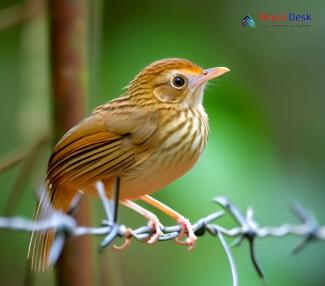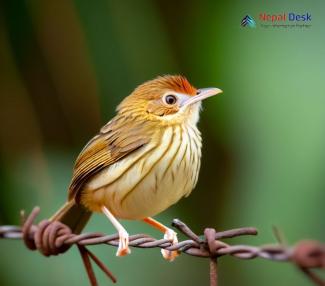The tiny, yet intriguing pin-striped tit-babbler (Mixornis gularis) frequently goes under the radar due to its petite stature and hidden lifestyle. Regardless, this timid bird captures the hearts of bird enthusiasts and holds a crucial role within the ecosystems it calls home. In this article, let's dive into the captivating world of this elusive avian species and discover where it can be found in Nepal.
A Peek into the Life of the Pin-Striped Tit-Babbler
Measuring a mere 11 to 13 centimeters long, the pin-striped tit-babbler is a small passerine bird sporting some unique characteristics, such as a white eye ring and blackish streaks down its throat for that "pin-striped" look.
Preferring dense plant life, these birds often nestle in thickets, scrublands, and secondary forests. Their diet mainly includes insects like ants, beetles, and caterpillars. Known for their agility while searching for food, pin-striped tit-babblers hop along branches and stay near the ground.
Naturally sociable birds, they often join mixed-species flocks with other small avians. During the breeding season, they construct cup-shaped nests made from delicate plant material and lay two to five eggs. Both mommy and daddy babbler take turns incubating their offspring.
The Pin-Striped Tit-Babbler's Home in Nepal
Nepal is a birdwatcher's paradise due to its varied habitats that house more than 900 bird species. The pin-striped tit-babbler finds itself quite at home in numerous regions of Nepal that offer suitable living spaces like secondary forests and scrublands.
In Nepal, sightings of the pin-striped tit-babbler typically occur in the Terai region as well as within the subtropical broadleaf forests of the Siwalik Hills. The presence of this unique bird highlights Nepal's rich biodiversity and well-maintained natural heritage.
Conservation and Involving the Community
Although the pin-striped tit-babbler isn't officially considered a threatened species globally, habitat loss and fragmentation remain significant threats to their existence. This emphasizes the need for habitat conservation and sustainable land-use practices.
To safeguard this enchanting avian species, it's important to involve the community in conservation efforts. By educating locals on the value of the pin-striped tit-babbler, promoting forest protection initiatives, and supporting eco-friendly lifestyle choices, we can make a difference.
In summary, the often-ignored pin-striped tit-babbler is a fascinating component of Nepal's abundant wildlife. By learning about their ecology, preserving their habitats, and encouraging local involvement in conservation endeavors, we can ensure these remarkable birds thrive for future generations to appreciate.




